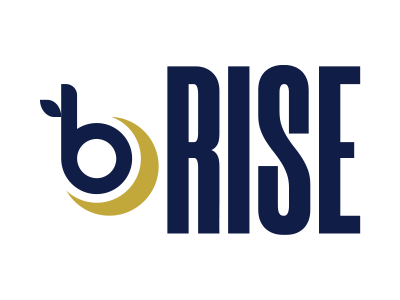Despite significant empirical support for nonabstinence alcohol interventions, there is a clear gap in research examining nonabstinence psychosocial treatment for drug use disorders. Future research must test the effectiveness of nonabstinence treatments for drug use and address barriers to implementation. The current review highlights a notable gap in research empirically evaluating the effectiveness of nonabstinence approaches for DUD treatment. While multiple harm reduction-focused treatments for AUD have strong empirical support, there is very little research testing models of nonabstinence treatment for drug use. Despite compatibility with harm reduction in established SUD treatment models such as MI and RP, there is a dearth of evidence testing these as standalone treatments for helping patients achieve nonabstinence goals; this is especially true regarding DUD (vs. AUD). In sum, the current body of literature reflects multiple well-studied nonabstinence approaches for treating AUD and exceedingly little research testing nonabstinence treatments for drug use problems, representing a notable gap in the literature.
Relapse road maps

This suggests that individuals with non-abstinence goals are retained as well as, if not better than, those working toward abstinence, though additional research is needed to confirm these results and examine the effect of goal-matching on retention. In a meta-analysis by Carroll, more than 24 RCT’s have been evaluated for the effectiveness of RP on substance use outcomes. Review of this body of literature suggests that, across substances of abuse but most strongly for smoking cessation, there is evidence for the effectiveness of relapse prevention compared with no treatment controls. However, evidence regarding its superiority relative to other active treatments has been less consistent. Outcomes in which relapse prevention may hold particular promise include reducing severity of relapses, enhanced durability of effects, and particularly for patients at higher levels of impairment along dimensions such as psychopathology or dependence severity21.
- Although abstinence from all substances is an excellent recovery goal for some, research consistently shows that many people who resolve alcohol and drug problems follow a path of moderation.
- Results of a preliminary nonrandomized trial supported the potential utility of MBRP for reducing substance use.
- Similarly, self-regulation ability, outcome expectancies, and the abstinence violation effect could all be experimentally manipulated, which could eventually lead to further refinements of RP strategies.
2. Relationship between goal choice and treatment outcomes
As noted by McLellan [138] and others [124], it is imperative that policy makers support adoption of treatments that incorporate a continuing care approach, such that addictions treatment is considered from a chronic (rather than acute) care perspective. Broad implementation of a continuing care approach will require policy change at numerous levels, including the adoption of long-term patient-based and provider-based strategies and contingencies to optimize and sustain treatment outcomes [139,140]. In addition to these areas, which already have initial empirical data, we predict that we could learn significantly more about the relapse process using experimental manipulation to test specific aspects of the cognitive-behavioral model of relapse.
1. Nonabstinence psychosocial treatment models
- Expectancies are the result of both direct and indirect (e.g. perception of the drug from peers and media) experiences3.
- Of note, other SUD treatment approaches that could be adapted to target nonabstinence goals (e.g., contingency management, behavioral activation) are excluded from the current review due to lack of relevant empirical evidence.
- The AVE was introduced into the substance abuse literature within the context of the “relapse process” (Marlatt and Gordon 1985, p. 37).
- Chronic stressors may also overlap between self-efficacy and other areas of intrapersonal determinants, like emotional states, by presenting more adaptational strain on the treatment-seeking client4.
- Elucidating the “active ingredients” of CBT treatments remains an important and challenging goal.
- In a meta-analysis by Carroll, more than 24 RCT’s have been evaluated for the effectiveness of RP on substance use outcomes.
- For instance, the return to substance use can have reciprocal effects on the same cognitive or affective factors (motivation, mood, self-efficacy) that contributed to the lapse.
Encouragement and understanding from friends, family, or support groups can help individuals overcome the negative emotional aftermath of the AVE. Explore the benefits of an individualized treatment plan for addiction counseling and why it’s a game-changer on the path to recovery. Getting through the holidays while maintaining recovery, especially for people newer to this life-changing process, is an accomplishment worthy of celebration in its own right. When an urge to use hits, it can be helpful to engage the brain’s reward pathway in an alternative direction by quickly substituting a thought or activity that’s more beneficial or fun— taking a walk, listening to a favorite piece of music. Possible substitutes can be designated in advance, made readily available, listed in a relapse prevention plan, and swiftly summoned when the need arises.
Moreover, this finding appeared attributable to individual differences in baseline (tonic) levels of SE. When urge and negative affect were low, individuals with low, intermediate or high baseline SE were similar in their momentary SE ratings. the abstinence violation effect refers to However, these groups’ momentary ratings diverged significantly at high levels of urges and negative affect, such that those with low baseline SE had large drops in momentary SE in the face of increasingly challenging situations.
Self-control and coping responses
The RAP is a cognitive intervention to help focus on healthier thinking. – Psychology Today
The RAP is a cognitive intervention to help focus on healthier thinking..
Posted: Sat, 14 Aug 2021 07:00:00 GMT [source]
If you are at a gathering where provocation arises because alcohol or other substances are available, leave. Cravings can intensify in settings where the substance is available and use is possible. Recognize that cravings are inevitable and do not mean that a person is doing something wrong. As with all things 12-step, the emphasis on accumulating “time” and community reaction to a lapse varies profoundly from group to group, which makes generalizations somewhat unhelpful.
The reformulated cognitive-behavioral model of relapse

While a lapse might prompt a full-blown relapse, another possible outcome is that the problem behavior is corrected and the desired behavior re-instantiated–an event referred to as prolapse. A critical implication is that rather than signaling a failure in the behavior change process, lapses can be considered temporary setbacks that present opportunities for new learning to occur. In viewing relapse as a common (albeit undesirable) event, emphasizing contextual antecedents over internal causes, and distinguishing relapse from treatment failure, the RP model introduced a comprehensive, flexible and optimistic alternative to traditional approaches. Lack of consensus around target outcomes also presents a challenge to evaluating the effectiveness of nonabstinence treatment.

